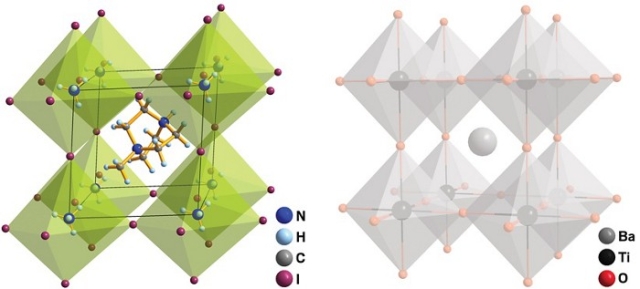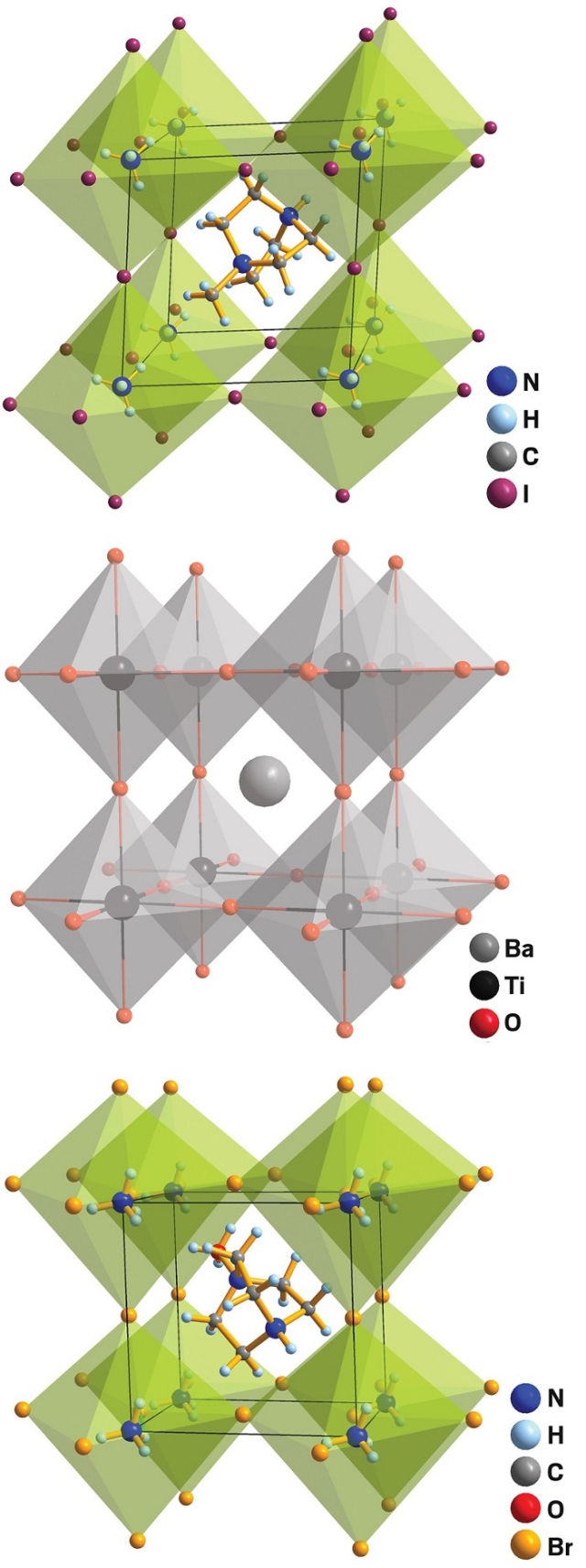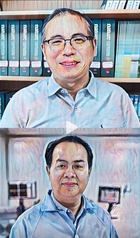Ferroelectric materials do something unique under an applied electric field: They exhibit spontaneous polarization, meaning positive and negative charges quickly separate within the crystal. That property makes the materials ideal for numerous applications in energy storage, medical imaging, and computer memory that retains information even when a device is off.

Credit: Yu-Meng You/Southest U.
A metal-free perovskite (left) resembles barium titanate (right) in terms of structure and ferroelectric properties.
By supplementing a design strategy with trial-and-error experimentation, researchers have now discovered a new family of metal-free ferroelectric materials. The finding may pave the way to lightweight, flexible, and low-cost memory devices, capacitors, and other types of electronics (Science 2018, DOI: 10.1126/science.aas9330).
Common ferroelectrics currently used in devices include barium titanate (BaTiO3 or BTO), lead titanate, and other ceramics with the perovskite structure and composition, which follows the stoichiometry ABX3. Although widely used industrially, these materials are costly to produce and often contain lead and other toxic heavy metals. For those reasons, scientists have searched for metal-free perovskites and have succeeded in making some. But those compounds tend to exhibit weak ferroelectric properties, precluding applications.
Now, a research team led by Yu-Meng You and Ren-Gen Xiong of China’s Southeast University have produced a family of 23 metal-free perovskites, some of which are on par with BTO in terms of ferroelectric properties.
Conventional perovskites consist of large and small metal cations, represented by A and B, respectively, in the general chemical formula. The size difference between the ions is one of the important attributes in these materials’ electronic behavior. Other factors, such as van der Waals forces and intermolecular interactions between ions in the crystal, also play key roles.
Armed with that information, the team developed a design strategy for making metal-free perovskite ferroelectrics with the general formula A(NH4)X3, in which A is a divalent organic cation and X is a halogen. They took the synthesis plan to the lab, where they reacted a large number of organic reagents with inorganic ammonium compounds and halogen acids.
Among the 23 metal-free perovskites produced in the study, one named MDABCO–NH4I3, which contains a diazabicyclo group, looks especially promising. That perovskite exhibits a large spontaneous polarization value, 22 microcoulombs per square cm, which is close to BTO’s value of 26. The new compound also looks to be especially stable in that it remains ferroelectric up to a phase transition temperature of 448 K, exceeding BTO’s limit of 390K.
“These results are stunning,”—a milestone reached 70 years after development of conventional ferroelectric perovskite oxides, says Wei Li, a specialist in inorganic functional materials at Nankai University. Li adds that the organic content, which can be modified to tune crystal properties, makes these materials easy to synthesize, lightweight, and inexpensive—all of which may soon lead to applications.

Credit: Yu-Meng You/Southest U.
A metal-free triiodide perovskite with a diazabicyclo group and a related bromide compound (top and bottom respectively) resemble barium titanate (middle) in terms of structure and ferroelectric properties.
2018-7-12 【C&EN News】


















